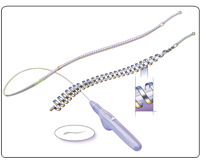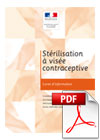Breast surgery
Adnexa surgery
Uterine surgery
Cervical surgery
Vulvar surgery
Other
Tubal ligation

The tubal ligation is a type of surgery considered as a permanent method for birth control. It is not reversible. This decision needs to be deeply thought about, this is why in France a legal delay of 4 months is mandatory (time running from the day of the visit with your doctor).
The tubal ligation consists by obstructing a part of each fallopian tube, in order to block the sperms’ path to the egg.
This sterilization surgery can be performed with different techniques:
Abdominal and transvaginal tubal ligation
These approaches are no longer an option. The tubal ligation is only performed when associated with more complex procedures.
Laparoscopic tubal ligation
This surgery is performed with a general anesthesia. The surgeon makes two small incisions – one in or just below the belly button (navel) and one at the upper edge of the pubic hair. Then a thin viewing tube (laparoscope) is inserted through the incision. Another instrument is inserted, in order to block tubes: the fallopian tubes are then banded (with a metal and plastic clamp). The stay at the hospital is usually only one day, but may require a complementary night. A work leave for one week must be planed.
Hysteroscopic tubal sterilization
Newer and easier with the Essure ® method. Hysteroscopic sterilization is a type of tubal sterilization procedure that uses body’s natural openings to place small implants into the fallopian tubes. Once the devices are in place, scar tissues form around them and will completely block the tubes within a delay of 3 months (a birth control method must be used during this period).
The hysteroscopic tubal sterilization can be performed with a short general anesthesia, or without any one. It is practiced within a delay of 15 minutes, and the woman can leave out by the end of the afternoon.
Advantages of this procedure are:
- No incisions on the skin
- No pain
- Equivalent efficiency than the laparoscopic tubal ligation
- No need for work leave
- No anesthesia required, so the woman can stay hospitalized only 2 hours.


